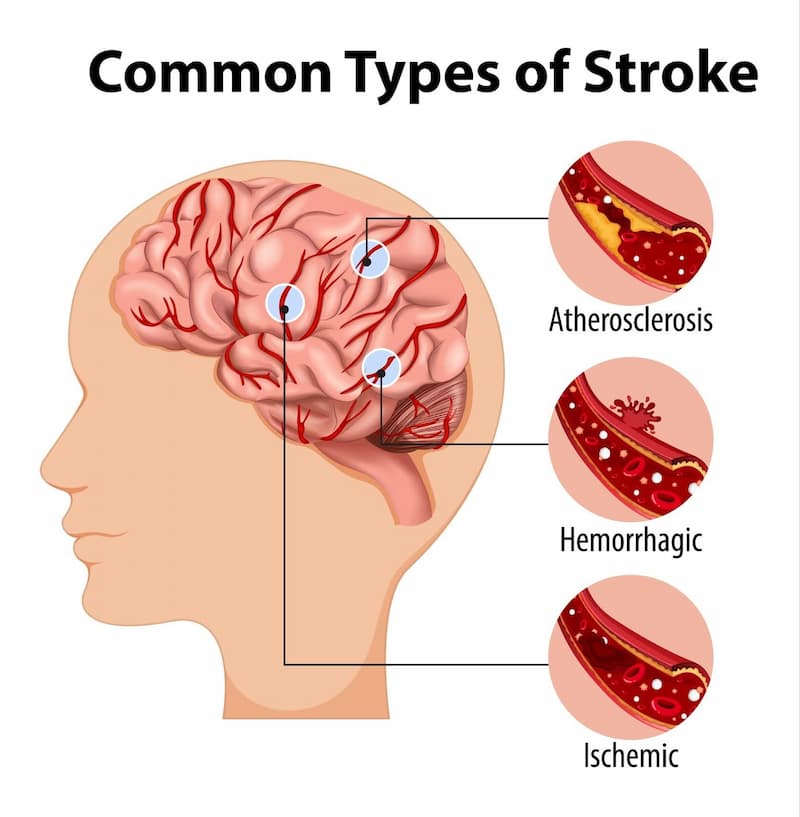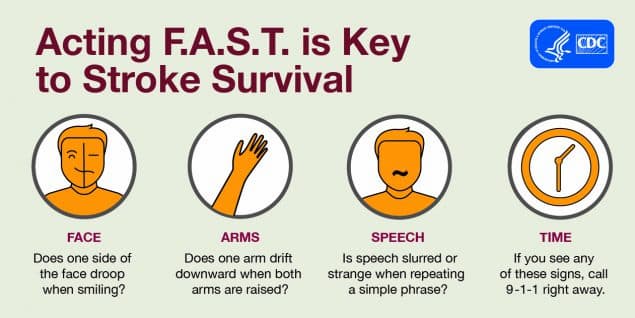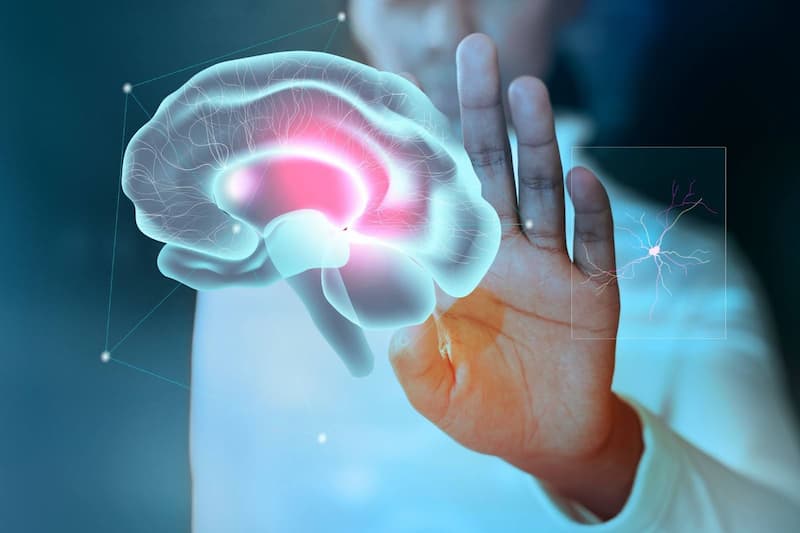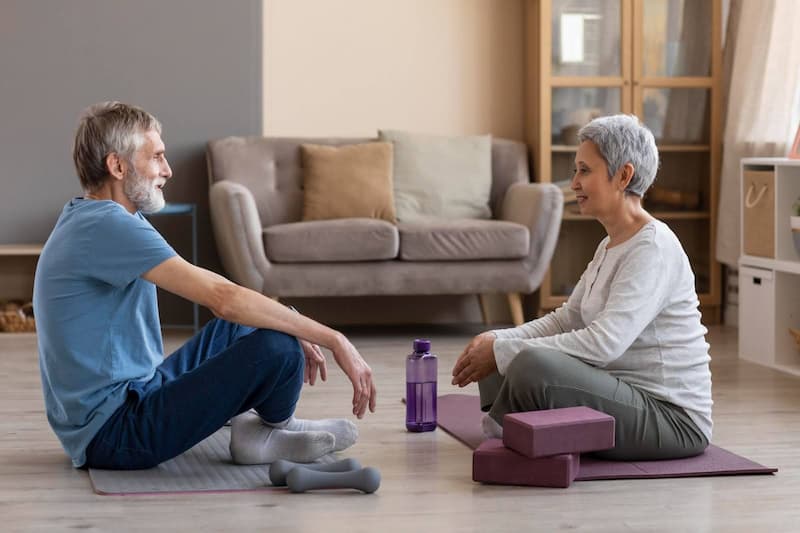Strokes are among the leading causes of health impairment in adults. According to the study, 4.5 million people die from stroke every year, and more than half of these deaths occur among people over 70. The effects of a stroke, such as dysfunctions of some parts of the body or loss of memory, significantly affect the quality of life for 3-6 months following the event.
In this article, we will explore the side effects of a stroke and the different ways of treatment for stroke after effects.
Understanding Stroke
It’s important to understand the nature of stroke and its origins before discussing the effects of a stroke—by that, you can predict or help yourself or the people around you.
Strokes are often characterized by bleeding into the brain and are sometimes compared to heart attacks. This type of stroke is called hemorrhagic.
The majority of strokes (about 85%) are ischemic, which occurs when blood clots block or plug an artery leading to the brain.
Definition of Stroke
Strokes are characterized by disruptions in blood circulation of the brain that cause a lack of oxygen and nutrients for brain cells. In this condition, the main or peripheral arteries in the brain become narrow or blocked or burst and leak blood into the brain.
It can result in a focal or global loss of cerebral function lasting more than 24 hours, or even fatality, depending on the location.
Types of Stroke
Ischemic strokes are the most common type worldwide. They are often confused with other types of strokes, which can impact treatment decisions and actions to prevent or predict the stroke aftereffects.

There are 3 types of strokes:
- Ischemic strokes occur due to blockages in various arteries caused by blood clots and fatty deposits, commonly due to the thrombi formation on active atherosclerotic plaques.
- Hemorrhagic strokes occur due to damage to the vascular wall of one of the cerebral arteries. Blood from an artery begins to bleed into the brain, which leads to a lack of control of some parts of the body that are connected to damaged parts of the brain.
- Transient ischemic attacks (TIAs) are often called “mini-strokes” because blood flow to the brain is blocked for only a short time—usually no more than 5 minutes.
Causes of Stroke
The origin of strokes is deeply connected to a person’s lifestyle and partly to their genetics. For example, if your close relative had a stroke, there is an increased chance that you can have it too.
In the last decade, there has been an increase in strokes among young adults aged 18 to 45, accounting for 10-15% of worldwide incidents. This trend indicates that young adults are experiencing more negative stressors in their lives, resulting in poor sleep, lack of physical activity, and emotional instability.
These preconditions increase the risk of developing high blood pressure, diabetes, and heart diseases—ultimately leading to a higher risk of strokes and short- or long-term effects of strokes.
The risk factors include various clinical, biochemical, behavioral, and other characteristics indicating an increased likelihood of developing a specific disease. All directions of preventive work are focused on controlling risk factors and correcting them, both in specific individuals and in the population.
Some specific diseases and conditions might cause a stroke in the future:
- High cholesterol and LDL (low-density lipoproteins) in the blood;
- Vascular diseases: atherosclerosis or carotid artery disease;
- Heart diseases: high blood pressure, myocardial infarction, atrial fibrillation, coronary artery disease, arrhythmia;
- Obesity;
- Sleep apnea;
- Auto-immune disorders: SLE, polyarteritis nodosa, Takayasu arteritis;
- Inherited connective tissue diseases: Ehlers-Danlos syndrome;
- Metabolic diseases: diabetes, Fabry diseases.
- Chronic head or neck conditions: migraine, meningitis;
- Neurological diseases: Fabry disease;
- COVID-19 can lead to stroke development in the acute period.
Besides that, age, sedentary lifestyle, high-performance sports, drug or smoking addiction, or previous cases of stroke and heart attack are also risk factors for a stroke.
Symptoms of Stroke
The most common symptoms of a stroke can be recognized very early. This increases the likelihood of receiving immediate medical assistance.
Five important symptoms can help you or your family react quickly. These symptoms may occur suddenly and include changes in behavior:
- Numbness or weakness in the face, arm, or leg, especially on one side of the body.
- Confusion, trouble speaking, or difficulty understanding speech.
- Trouble seeing in one or both eyes.
- Troubles with walking, dizziness, loss of balance, or lack of coordination.
- Severe headache with no known cause.

Rarely, there could be disorientation or memory loss, nausea, dizziness, or vomiting. It is important to remember that a quick check of the body and contact with the ambulance help to avoid the effects of a stroke and can save a person’s life.
What Are the Effects of a Stroke
The human brain is a complex organ that controls the whole body—because of that, you can move, breathe, eat, and sleep. If there is damage to parts of the brain related to the functioning of some parts of the body, the quality of life decreases due to dysfunction and blockage of some body parts.
Shortly after the damage occurs, neural cells remain alive, and certain symptoms may be partly reversible. However, over time, more neural cells become irreversibly damaged and die. Consequently, the long-term effects of a stroke can vary. They may be
- partially reversible if neural cells are damaged but still alive,
- or irreversible if cells have already died.
Nevertheless, nearby cells might partially compensate for the effects by reorganizing the neural network, leading to a gradual restoration of functional abilities, although typically not fully.
What are the side effects of a stroke?
- Physical effects—disability or loss of control on one side of the body or with localization in more parts. For example, it could be a loss of muscle movements or the appearance of strange sensations in the body.
- Cognitive effects—it can influence memory work or the quality of perception and thinking problems.
- Emotional effects—it appears as difficulty controlling emotions and expression of inappropriate emotions, or even depression, anxiety, and feelings of isolation.
The effects of a stroke on the body depend on the location of the obstruction and how much the brain tissue is affected. Different parts of the brain control opposite parts of the body, so there are 2 types of side effects of a stroke based on that:
- Right-side stroke effects—if the stroke occurs on the left side of the brain, it affects the right side of the body and appears as paralysis of the right arm or leg. It causes speech problems, slow movements, and memory loss.
- Left-side stroke effects occur when the stroke happens on the right side of the brain. It can produce paralysis of the right limbs, vision or memory problems, and quick and sharp behavior.
Physical Effects
Stroke after effects can develop quickly and persist for some time, ranging from one day to a few years. The most common effects of a stroke include:
- paralysis or weakness on one side of the body;
- troubles with balance and coordination;
- difficulties with swallowing or speaking;
- changes in vision or hearing;
- chronic pain or headaches.

Paralysis or Weakness on One Side of The Body
Motor sensory impairment is the most common after-effect of stroke and appears as weakness (paresis) or paralysis (plegia) in some parts of the body. A feeling of fatigue could also be related to the stroke. Fatigue or weakness prevails in over 50% of cases of long-term effects of strokes worldwide.
Paralysis or weakness can be spread to one muscle or affect the entire face or even the entire side of the body. It leads to a lack of control and disability in movement, hindering the chances of resuming a normal life, including social participation, returning to work, driving, reading, and sleeping.
Troubles With Balance and Coordination
Stroke often impairs walking ability — 80% of people experience some walking troubles within 3 months after stroke. It increases the risk of falls and injuries and can lead to the long-term effects of stroke such as difficulty walking, mobility issues, and even difficulty speaking on the phone.
Difficulty Swallowing or Speaking
People who have experienced a stroke may encounter difficulties in understanding speech or communicating with others. This can sometimes result in disabilities related to reading or writing. Slurred speech, known as dysarthria, is caused by a loss of control over certain muscles.
Some stroke survivors may face challenges with swallowing food and liquids, known as dysphagia. It is associated with damage to areas affected by stroke, such as the tongue and neck muscles.
Changes in Vision or Hearing
Stroke can impact vision, leading to blurriness or loss of vision in one eye, and cause changes in hearing sensitivity or perception. When a stroke occurs in the back of the brain, it affects the visual cortex, which is connected to the optic nerves, resulting in the loss of function in one or both eyes.
Similar processes occur when damage happens in the temporal lobes—an individual can have reduced hearing or even a complete loss of hearing.
Chronic Pain or Headaches
Persistent pain or headaches may occur as a stroke after effects — people may experience pain, higher sensibility in different parts of the body, or regular headaches. These uncomfortable feelings can happen due to many factors. For example, because of damage to the sensory regions of the brain, stiff joints, or spastic muscles. It could appear as cold or hot feelings in the head or other parts of the body, numbness, burning, tingling, or underlying aching pain.
In rare cases, central pain syndrome can occur, characterized by unusual sensations or sharp pain. It happens when the thalamus, an important part of the brain involved in sensory processing, sleep, and alertness, is damaged.
Get a free online consultation
Contact us to learn more about our stem cell therapy options, what are the possible outcomes, and whether you could benefit from the procedure.

Medical Advisor, Swiss Medica doctor
Cognitive Effects
Stroke can cause significant disabilities in remembering, communicating at different levels, or being focused and solving problems. Dysfunction in perception, executive functioning, abstract reasoning, episodic memory, or language is present in 60–70% of stroke patients.
There are certain stroke effects on the brain related to cognitive functions:
- memory loss or difficulty with recall;
- troubles with language and communication;
- decreased attention span and ability to concentrate;
- difficulties with problem-solving and decision-making;
- changes in mood and personality.
Memory Loss or Difficulty With Recall
If a stroke damages the hippocampus and cerebral cortex, there will be memory-related side effects of the stroke, including difficulty recalling past events or forming new memories.
Studies show that working memory is affected by stroke as well as long-term memory. This causes problems in recalling the names of relatives or forgetting the addresses and getting lost.
Predictors of memory function after stroke are related to vascular risk factors and Alzheimer’s disease pathology. Vascular risk factors, previous stroke, stroke severity, and congestive heart failure are each known to predict memory impairment early after stroke.
Trouble With Language and Communication
Our communication skills are located in different parts of the brain. Depending on the damaged areas, stroke can affect skills in learning new languages, reading favorite books, and writing or sending messages via social media or by phone.
This lack of skills to communicate is called aphasia, which is connected with decreased attention. For example, a person can not engage in a long conversation with a friend because they have difficulty recalling previous words or maintaining focus on their friend’s speech.
Decreased Attention Span and Ability to Concentrate
One of the common stroke after-effects is attention deficits, which can result in difficulty focusing on tasks or sustaining attention. It can occur as a decreased attention span when a person feels that it is impossible to concentrate on work tasks, or it could lead to a “neglect” syndrome.
It means that a person may not be aware of what is happening on the left or ride sides of the body. For example, if the right side of the brain is affected by a stroke, they may not see people or objects on their left side.
Difficulty With Problem-Solving And Decision-Making
The frontal lobes and parietal cortex are deeply connected with problem-solving abilities and decision-making skills. One of the most influential side effects of a stroke occurs in disability to solve basic or more complicated problems: it could be tasks in the office or simple tasks such as cleaning, dressing, or calling a friend.
Changes in Mood or Personality
Pathological crying or laughing, also known as the pseudobulbar effect, occurs in more than 10% of stroke survivors and can be distressing for them and their families. Individuals may experience mood swings or emotional lability that affects their emotional well-being and social interactions. Without special treatment, it can lead to hormonal disorders and the more long-term effects of strokes—depression and anxiety.
Emotional Effects
What are the long-term effects of a stroke? Cognitive or physical effects after a stroke can lead to deeper neurological disorders and affect the lifestyle and ability to express or even care about other people for years. There are some consequences of a stroke:
- depression or anxiety;
- irritability or mood swings;
- feeling isolation or loneliness;
- changes in self-esteem or self-image.
Depression or Anxiety
Coping with ongoing uncertainty and disability, stroke survivors have to adapt to a new role of dependency. It can lead to feelings of sadness, hopelessness, or anxiety, and over time, it can transform into depression, which is characterized by a low mood or loss of pleasure or interest in activities for long periods.
Irritability or Mood Swings
These are the most common stroke aftereffects that impact emotional parts of the brain—for example, the amygdala, the insula, or insular cortex, and a structure in the midbrain called the periaqueductal gray. If these areas are damaged, an individual can show irritability, mood swings, or emotional instability.
Feelings of Isolation or Loneliness
Returning to an adequate level of life after a stroke can be challenging, especially in communication with others. Depending on the effects of a stroke, it can lead to feelings of isolation, loneliness, or disconnection from others. As we have already mentioned, an individual can feel himself or herself more fragile or can not give full attention to the topic of talking.
A deep level of communication gives people support and provides hormonal and emotional stability. Research shows that loneliness itself can lead to a higher risk of stroke.
Changes in Self-Esteem or Self-Image
Stroke survivors may experience shifts in self-esteem, body image, or confidence—they can feel an absence of connections with their own body and may not even feel some parts. The level of support received during rehabilitation plays a crucial role.
Research shows that the self-confidence of individuals can be affected by the self-confidence levels of their spouses and relatives. People who had higher self-esteem before a stroke experienced less stress and showed fewer signs of depression.
Recovery From Stroke
After a stroke, rehabilitation should start as soon as possible. Each day counts because the side effects of a stroke develop very quickly. Here, we mention possible treatment options and prevention strategies.
Rehabilitation Options
The most common way of treatment after ischemic stroke is to restore blood flow to the affected region by using thrombolytics or mechanical devices that physically remove clots.
The thrombolytic effect is limited due to a therapeutic window of several days or even just a couple of hours after the onset of stroke symptoms. This is the reason why only a small percentage of patients receive the required therapy. Physical therapy and medicine are used to restore lost functions in long-term therapy, but the results are not guaranteed.
Stem Cells Treatment
Stem cell treatment is proven to be one of the most effective therapies for achieving recovery goals. The basic nature of adult stem cells is their ability to transform themselves.
During the procedure, mesenchymal stem cells (MSCs) and neural stem cells (NSCs) are injected intravenously.
MSCs circulate in the blood or cerebrospinal fluid and produce substances with potent neurotrophic effects, facilitating the regeneration of damaged cells and the normalization of their structure.
NSCs are cells that actively migrate to the site of injury and begin to proliferate, transforming into central nervous system cells capable of performing the same functions as the patient’s diseased cells.
Different studies show that mesenchymal stem cell treatment, especially with cells derived from the umbilical cord, can help reduce the side effects of a stroke:
- they stimulate neurogenesis, the process in which cells transform into new neurons;
- they migrate into ischemic regions of the brain and restore damaged parts;
- they stimulate the growth of new vessels to provide blood circulation and, by doing so, transport nutrients to different parts of the brain.
Stem cells can not only support the brain but also rejuvenate the whole body. For example, they can help restore some parts of the nervous system in a damaged leg or arm.
Coping Strategies for Stroke Survivors
Various types of therapy are available to restore essential functions of the body and brain. Scientists regularly try new methods, such as robot-assisted neurorehabilitation. Still, there are more traditional ways for long-term rehabilitation that have proven to be effective and provide smooth restoration of needed functions:
- Physical therapy is based on physical training that helps stroke survivors restore simple motor activities, such as walking, sitting, standing, lying down, and switching from one type of movement to another.
- Speech therapy helps to reduce the aftereffects of a stroke by relearning languages and conducting speech performances. It is appropriate when there is no damage to cognitive functions.
- Psychological or psychiatric therapy is important to help people after a stroke cope with feelings of loneliness, frustration, anxiety, or depression. It is long-term rehabilitation to recover self-confidence through deep communication with people and understanding changes that happen in the body after a stroke.

All strategies mentioned above give results after a few months or years of consistent effort. While they offer a good opportunity to readjust to one’s previous quality of life, it’s important to note that they are long-term and may not always guarantee desired outcomes.
Preventing Future Strokes
As we mentioned above, there are certain types of lifestyles and predispositions for stroke. Strokes occur in different ages, countries, races, and in both sexes. Some risks apply to women during pregnancy.
The most proven preventive method is based on three aspects of lifestyle:
- maintaining a healthy diet,
- ensuring adequate recreation and sleep,
- incorporating a full range of movements during the day: walking, fitness, yoga, or other sports.
It is important to note that if a family member has had a stroke, your risk of experiencing a stroke and stroke after-effects in the future is elevated. Still, some studies suggest that regular physical activity and proper daily care routines reduce these risks.
Stem Cell Therapy for Stroke Rehabilitation
The use of stem cells for rehabilitation after various diseases has been under development for over 40 years. This therapy has been shown to provide stable and faster results for stroke survivors. When combined with traditional long-term methods, it could prove to be an effective approach for patients’ recovery.
Swiss Medica has developed a set of protocols to provide more specialized treatment for stroke survivors. Our treatments involve the use of stem cells injected into the brain or body, with a high viability rate of 90%, aimed at restoring functions.
We primarily harvest adult mesenchymal stem cells from sources such as the placenta or umbilical cord of donors. These materials are harvested as they are discarded after childbirth in a sterile environment, ensuring minimal risk of contamination. These sources are also selected because of their abundance and accessibility.
To ensure their purity, viability, and sterility, stem cells undergo a series of tests before being used in treatments. This includes thorough checks for bacterial, fungal, and viral contamination, as well as genetic and molecular testing to confirm their identity and function.
We do not use embryonic stem cells due to ethical reasons and higher health risks.
In embryonic cells, unlike MSCs and NSCs, there is a risk of tumor development, including malignant tumors, and teratomas.
Additionally, we refrain from applying hormonal or chemical procedures to keep the process of rehabilitation safe and natural. When conducted in a sterile and precise manner, stem cell therapy carries a minimal risk of side effects.
Explore our dedicated article to learn more about stem cell therapy, indications and contraindications, the treatment process, and associated costs.
If you want to get a free consultation with our doctor—please contact us in the form below.
Get a free online consultation
To learn more about the procedure of stem cell therapy, the expected results, the cost of the treatment, and more, you can contact us for a free consultation with one of our medical experts.

Medical Advisor, Swiss Medica doctor
List of References:
Warburton E, Alawneh JA, Clatworthy PL, Morris RS. Stroke management. BMJ Clin Evid. 2011 Jun 9;2011:0201. https://www.ncbi.nlm.nih.gov/pmc/articles/PMC3217648/
Creutzfeldt CJ, Holloway RG, Walker M. Symptomatic and palliative care for stroke survivors. J Gen Intern Med. 2012 Jul;27(7):853-60. doi.org/10.1007/s11606-011-1966-4
Ekker MS, Verhoeven JI, Schellekens MMI, Boot EM, van Alebeek ME. Risk Factors and Causes of Ischemic Stroke in 1322 Young Adults. Stroke. 2023 Feb;54(2):439-447. doi.org/10.1161/STROKEAHA.122.040524
Immovilli P, Marchesi E, Terracciano C, Morelli N, Bazzurri V. A “Post-mortem” of COVID-19-associated stroke: a case-control study. J Stroke Cerebrovasc Dis. 2022 Nov;31(11):106716. doi.org/10.1016/j.jstrokecerebrovasdis.2022.106716
Mansfield A, Inness EL, Mcilroy WE. Stroke. Handb Clin Neurol. 2018;159:205-228. doi.org/10.1016/B978-0-444-63916-5.00013-6
Nys GM, van Zandvoort MJ, de Kort PL, Jansen BP, de Haan EH, Kappelle LJ. Cognitive disorders in acute stroke: prevalence and clinical determinants. Cerebrovasc Dis. 2007;23(5-6):408-16. doi.org/10.1159/000101464
Lugtmeijer S, Lammers NA, de Haan EHF, de Leeuw FE, Kessels RPC. Post-Stroke Working Memory Dysfunction: A Meta-Analysis and Systematic Review. Neuropsychol Rev. 2021 Mar;31(1):202-219. doi.org/10.1007/s11065-020-09462-4
Cramer SC, Richards LG, Bernhardt J, Duncan P. Cognitive Deficits After Stroke. Stroke. 2023 Jan;54(1):5-9. doi.org/10.1161/STROKEAHA.122.041775
Valtorta NK, Kanaan M, Gilbody S, Ronzi S, Hanratty B. Loneliness and social isolation as risk factors for coronary heart disease and stroke: systematic review and meta-analysis of longitudinal observational studies. Heart. 2016 Jul 1;102(13):1009-16. doi.org/10.1136/heartjnl-2015-308790
Chung ML, Bakas T, Plue LD, Williams LS. Effects of Self-esteem, Optimism, and Perceived Control on Depressive Symptoms in Stroke Survivor-Spouse Dyads. J Cardiovasc Nurs. 2016 Mar-Apr;31(2):E8-E16. doi.org/10.1097/JCN.0000000000000232
Permana AT, Bajamal AH, Parenrengi MA, Suroto NS, Lestari P, Fauzi AA. Clinical outcome and safety of stem cell therapy for ischemic stroke: A systematic review and meta-analysis. Surg Neurol Int. 2022 May 20;13:206. doi.org/25259/SNI_1174_2021
Bui KD, Johnson MJ. Designing robot-assisted neurorehabilitation strategies for people with both HIV and stroke. J Neuroeng Rehabil. 2018 Aug 14;15(1):75. doi.org/10.1186/s12984-018-0418-3
Prior PL, Suskin N. Exercise for stroke prevention. Stroke Vasc Neurol. 2018 Jun 26;3(2):59-68. doi.org/10.1136/svn-2018-000155
Medical Advisor, Swiss Medica doctor







